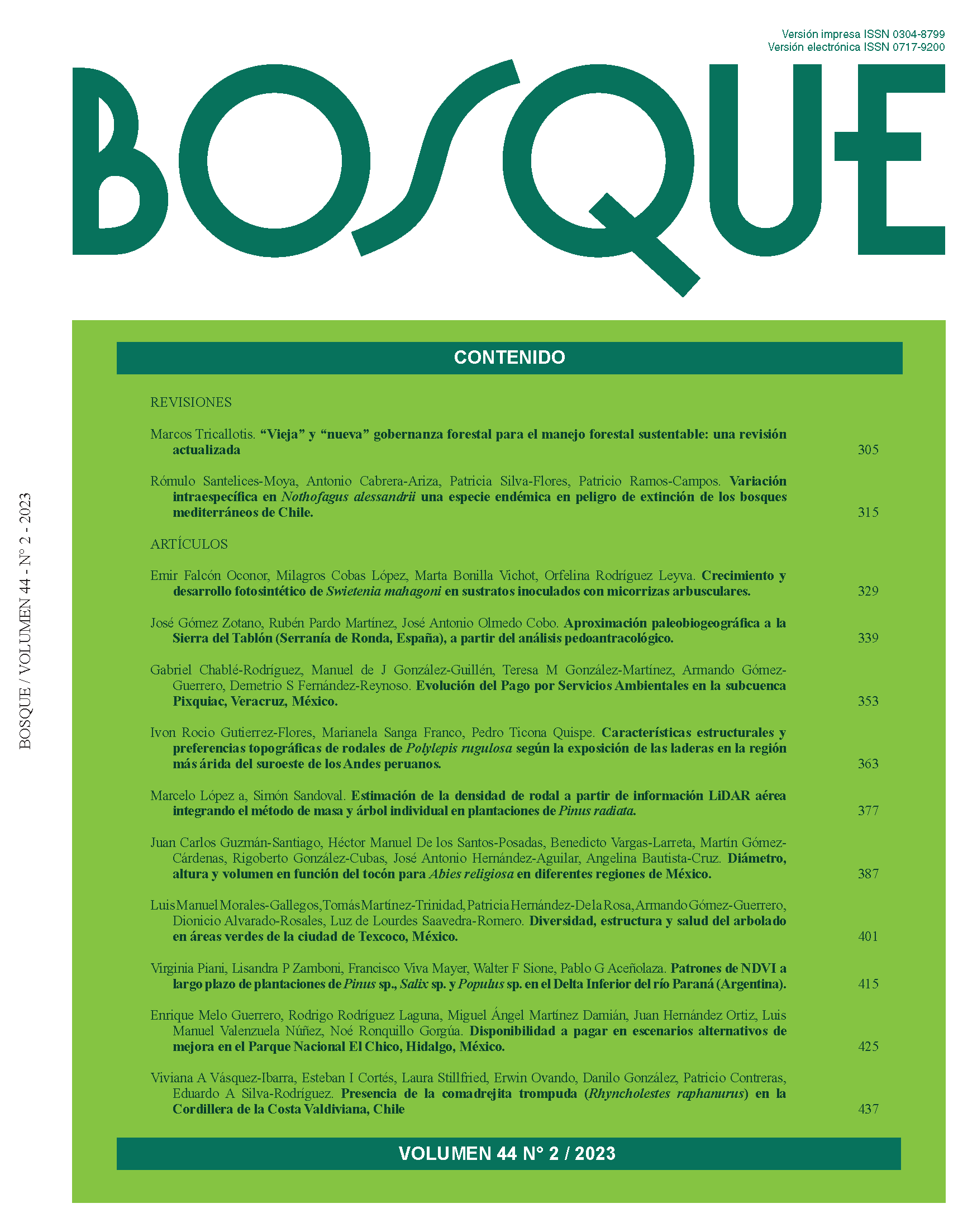Crecimiento y desarrollo fotosintético de Swietenia mahagoni en sustratos inoculados con micorrizas arbusculares
Contenido principal del artículo
Resumen
La inoculación con hongos micorrízicos arbusculares (HMA) ha permitido un desarrollo y crecimiento controlado en diferentes especies; sin embargo, no se ha evaluado su efecto en algunas especies tropicales como Swietenia mahagoni. El estudio evaluó el crecimiento y desarrollo fotosintético de S. mahagoni producida en sustratos inoculados con HMA. Con un diseño completamente al azar, se evaluaron las combinaciones de dos factores: sustrato (cascarilla de cacao + fibra de coco + aserrín de pino compostado en proporciones 6:2:2 y 2:6:2, y un testigo compuesto por suelo + cascarilla de cacao en proporción 9:1) y cepas micorrízicas (Glomus cubense, Rhizoglomus irregulare y Funneliformis mosseae). Desde los 30 hasta los 120 días después la germinación de la semilla en vivero, se evaluó la superficie foliar y la masa seca total, con las cuales se efectuó el análisis del crecimiento a través de la tasa relativa de crecimiento y la tasa de asimilación neta. A los 120 días se evaluó la tasa fotosintética, conductancia estomática, transpiración y concentración interna de CO2. Se encontraron interacciones significativas entre los factores para todas las variables evaluadas. Las cepas Glomus cubense y Rhizophagus intraradices, en el sustrato conformado por 20 % de cascarilla de cacao + 60 % de fibra de coco + 20 % de aserrín, propiciaron incrementos significativos en el crecimiento y desarrollo fotosintético de S. mahagoni. Es evidente la importancia de la asociación micorrízica para que las plántulas de S. mahagoni mantengan un mecanismo fotosintético más eficiente que les permita mejor establecimiento en plantaciones.

